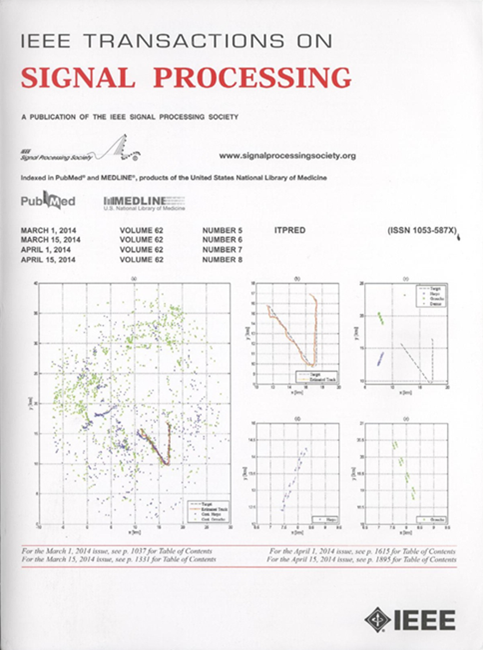Cramér-Rao Lower Bounds for Unconstrained and Constrained Quaternion Parameters
IF 4.6
2区 工程技术
Q1 ENGINEERING, ELECTRICAL & ELECTRONIC
引用次数: 0
Abstract
The Cramér-Rao lower bound (CRLB) is a fundamental result in statistical signal processing, however, the CRLB for quaternion parameters is not yet established. To this end, we develop the theory of quaternion Cramér-Rao lower bound (QCRLB), based on the generalized Hamilton-real (GHR) calculus. For generality, this is achieved in a way that conforms with the real and complex CRLB. We first provide the properties of the quaternion covariance matrix and the quaternion Fisher information matrix (FIM), paving the way for the derivation of the QCRLB. This serves as a basis for the formulation of the QCRLB without constraints and a criterion for determining whether the QCRLB is attained. We also establish the QCRLB for constrained quaternion parameters, including both nonsingular and singular cases of the quaternion FIM. These broaden the theoretical framework and enhance its applicability to diverse practical scenarios. The practical efficacy of the QCRLB is demonstrated through two illustrative examples. Numerical validations confirm that the maximum-likelihood estimator (MLE) attains the QCRLB for the linear model, and the quaternion gradient ascent (QGA) algorithm achieves the QCRLB at each iteration with theoretical guarantees. We also propose the quaternion constrained scoring (QCS) algorithm, which converges in one step in the linear constrained MLE case, for the linear model. These results significantly contribute to both the theory and practical application of quaternion signal processing, bringing valuable insights into the quaternion parameter estimation.无约束和约束四元数参数的cram - rao下界
本文章由计算机程序翻译,如有差异,请以英文原文为准。
求助全文
约1分钟内获得全文
求助全文
来源期刊

IEEE Transactions on Signal Processing
工程技术-工程:电子与电气
CiteScore
11.20
自引率
9.30%
发文量
310
审稿时长
3.0 months
期刊介绍:
The IEEE Transactions on Signal Processing covers novel theory, algorithms, performance analyses and applications of techniques for the processing, understanding, learning, retrieval, mining, and extraction of information from signals. The term “signal” includes, among others, audio, video, speech, image, communication, geophysical, sonar, radar, medical and musical signals. Examples of topics of interest include, but are not limited to, information processing and the theory and application of filtering, coding, transmitting, estimating, detecting, analyzing, recognizing, synthesizing, recording, and reproducing signals.
 求助内容:
求助内容: 应助结果提醒方式:
应助结果提醒方式:


